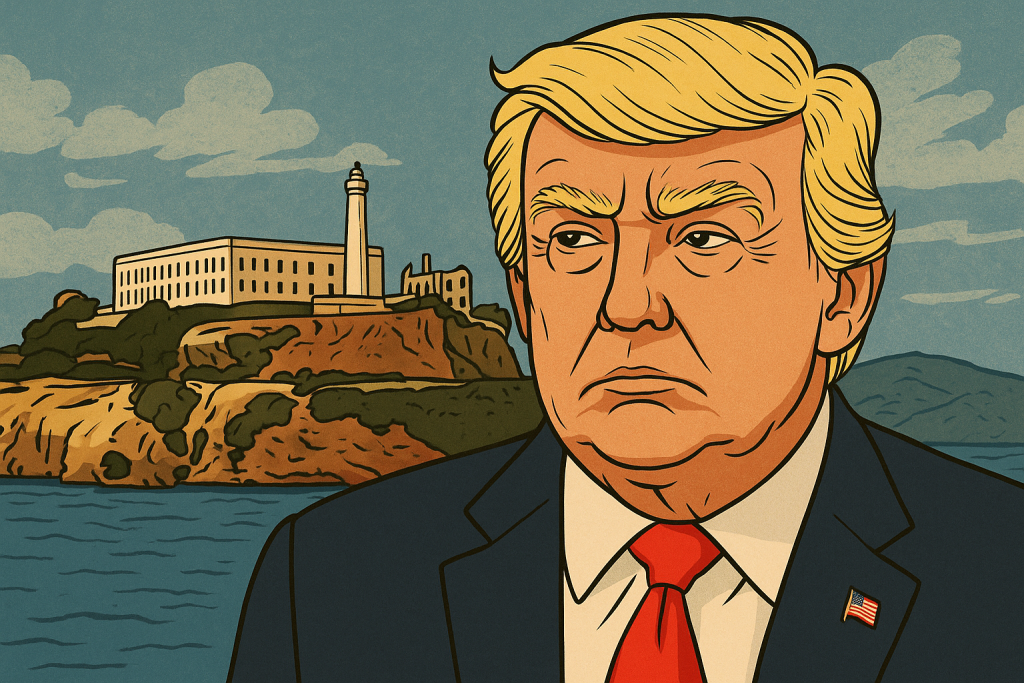It was once America’s most feared prison. Now, former President Donald Trump is floating the idea of bringing Alcatraz back to life. But behind the bold proposal lies a debate: Is this about safety—or symbolism?
“We’ll Put the Worst of the Worst There”
Trump recently visited the famous island prison with figures like Attorney General Pam Bondi and Governor Doug Burgum, describing it as a potential holding site for the country’s most violent offenders. During the visit, which drew national headlines, he suggested renovating and reopening Alcatraz as a message of zero tolerance.
According to the New York Post, the trip was positioned as a serious inspection—but insiders suggest the event may have been more political theater than a policy rollout.
It Makes Headlines—But Does It Make Sense?
Reopening Alcatraz isn’t just a question of tough-on-crime branding—it’s a logistical puzzle. The federal prison closed in 1963 due to extreme maintenance costs and isolation-related challenges. Estimates from The Daily Beast suggest a full renovation today could exceed $2 billion, not counting the environmental impact or security upgrades required.
Critics also point out that Alcatraz is now a federally protected historic site and a major tourist attraction run by the National Park Service—making the concept of converting it back into an active prison both politically and practically complex.
A Symbol with Layers
Trump’s vision taps into nostalgia and a sense of old-school justice. But as the San Francisco Chronicle highlights, the island isn’t just a former prison—it’s also a sacred cultural space. In the late 1960s, it was occupied by Native American activists demanding civil rights and tribal recognition. To many, it stands for protest, not punishment.
For Trump’s critics, the Alcatraz pitch isn’t really about incarceration—it’s about performing authority during an election cycle. The message is loud and symbolic: We’re bringing back the “tough” America.
The Reality Check
So far, no formal plan or funding request has been made to Congress. The Justice Department hasn’t confirmed whether any actual proposal is in motion. And legal experts say the odds of overcoming environmental protections, state opposition, and budget scrutiny are slim.
But that may not matter. The point of Alcatraz—at least in this context—may not be to build a prison. It may be to build a moment.
Closing Thought: What Do We Want Our Symbols to Say?
Alcatraz holds a complicated place in American memory—part punishment, part myth, part movement. As the idea of its revival surfaces again, it’s worth asking: Are we solving problems, or chasing the comfort of old icons?

